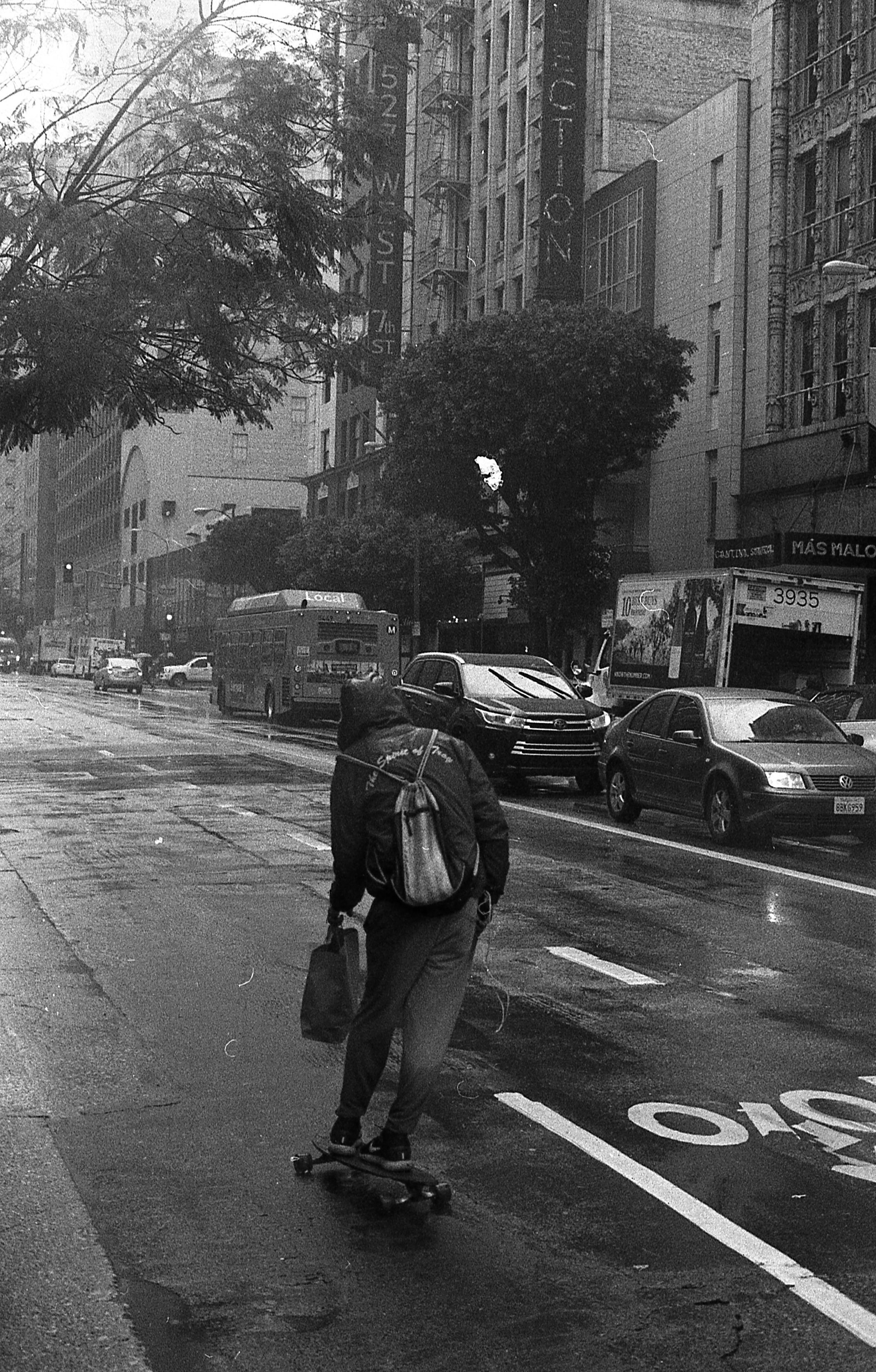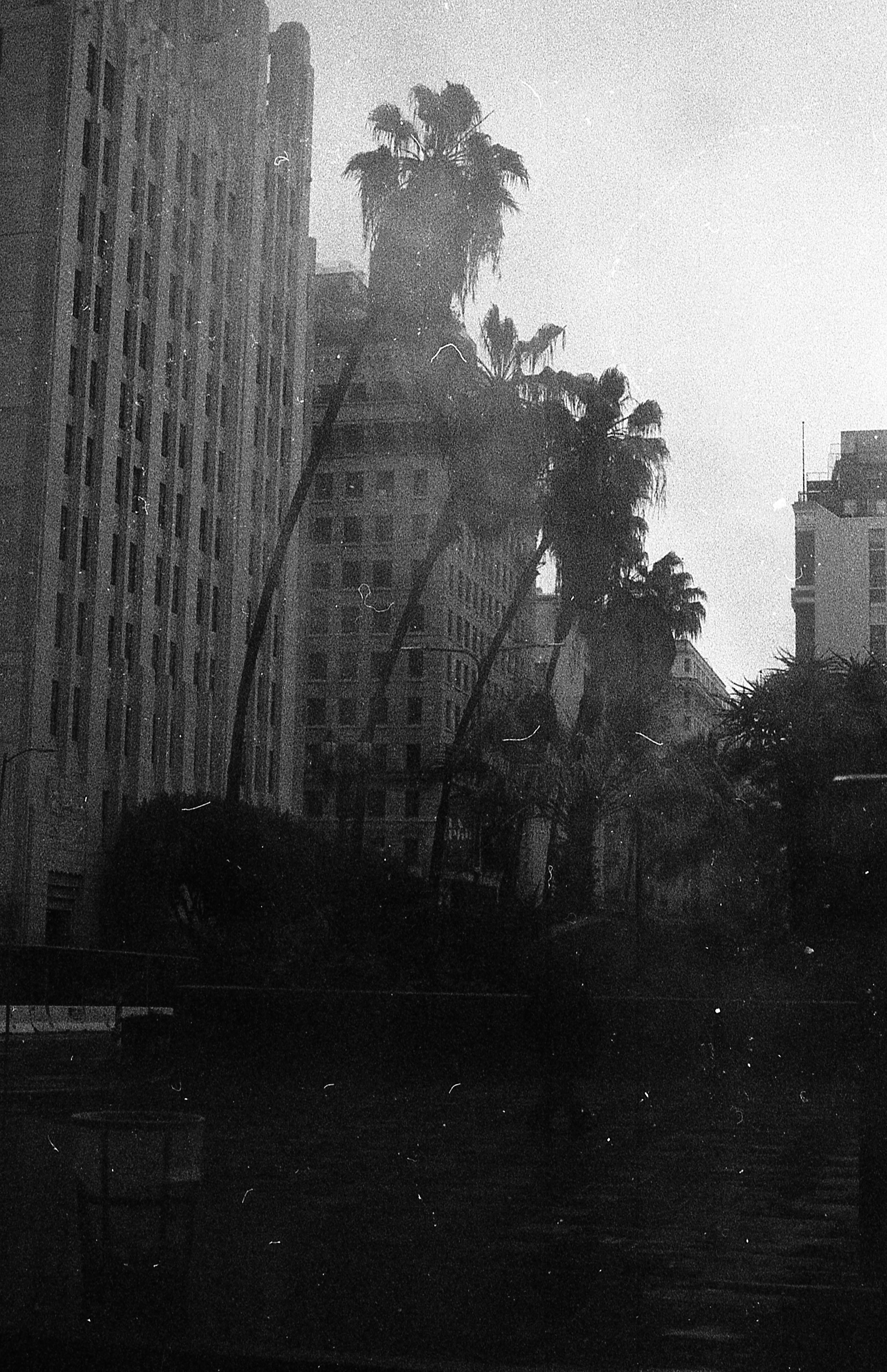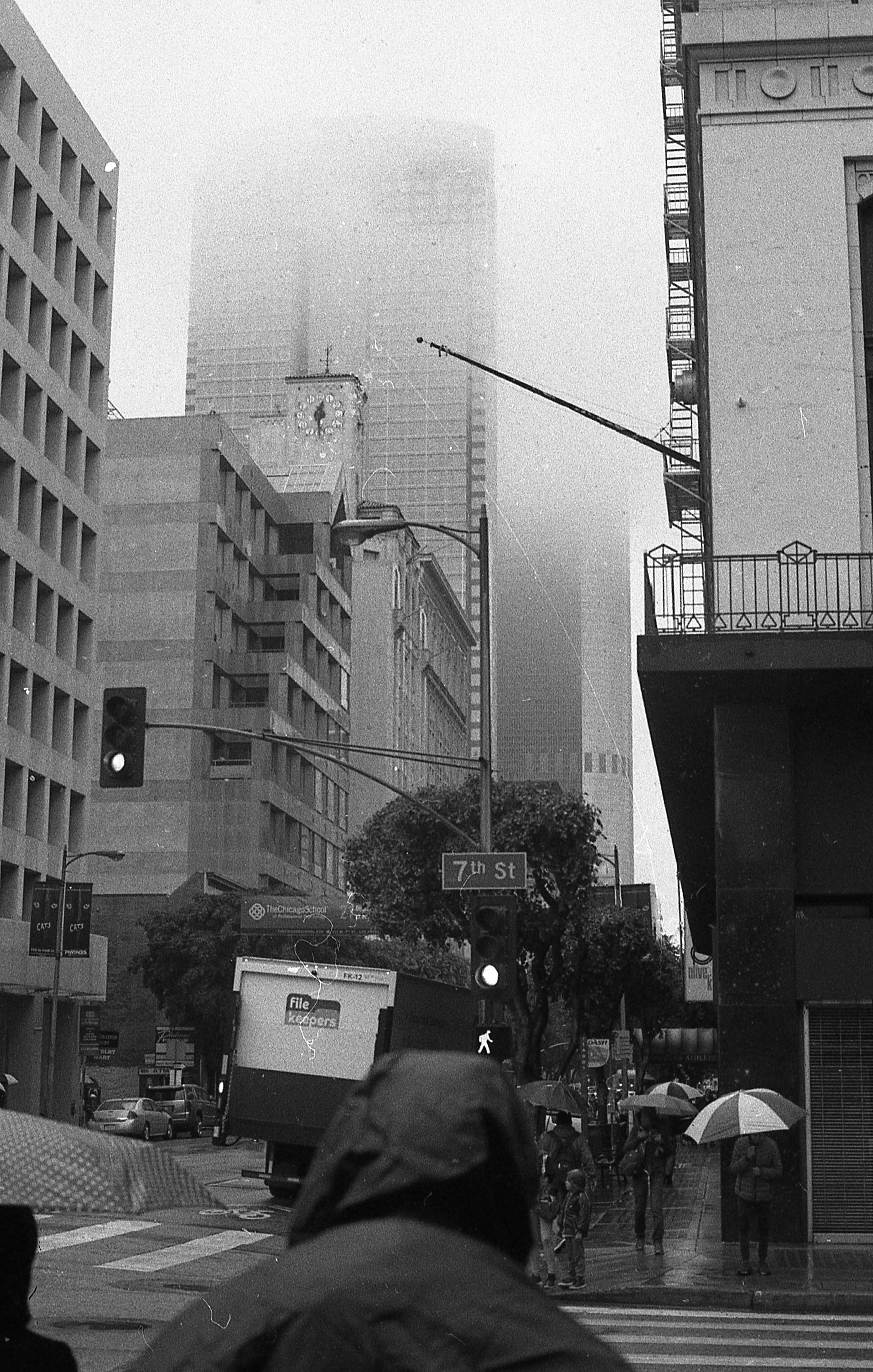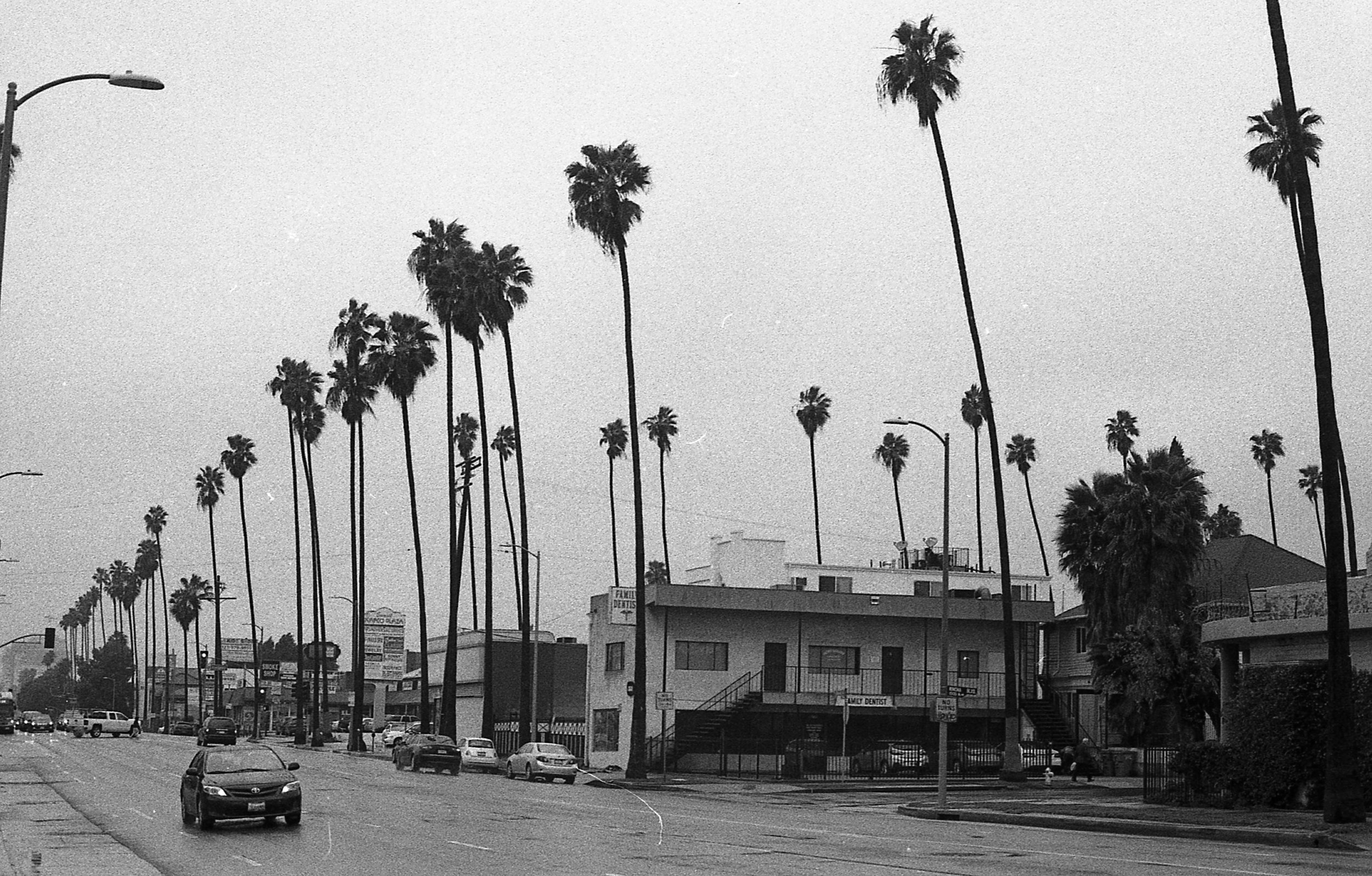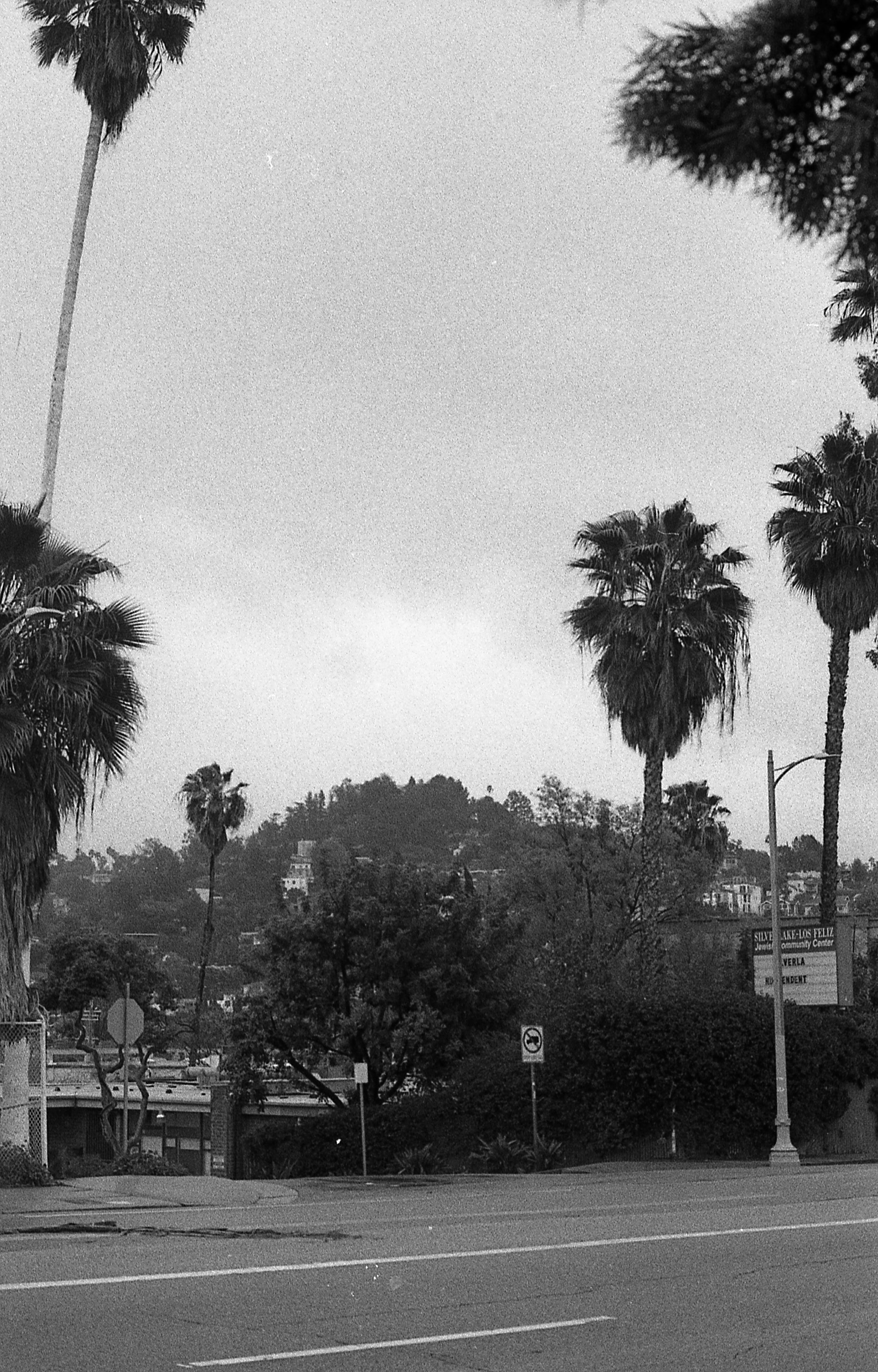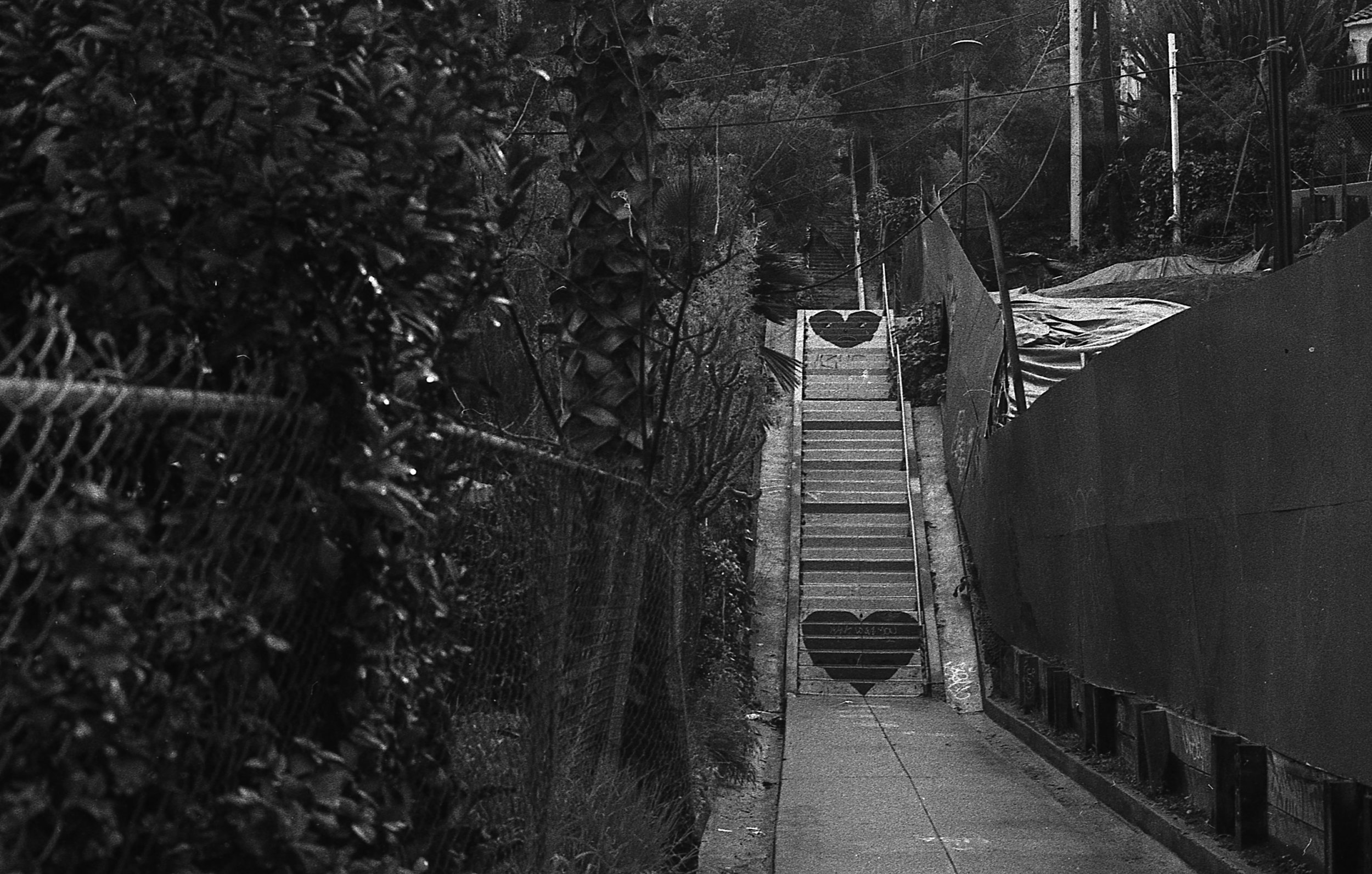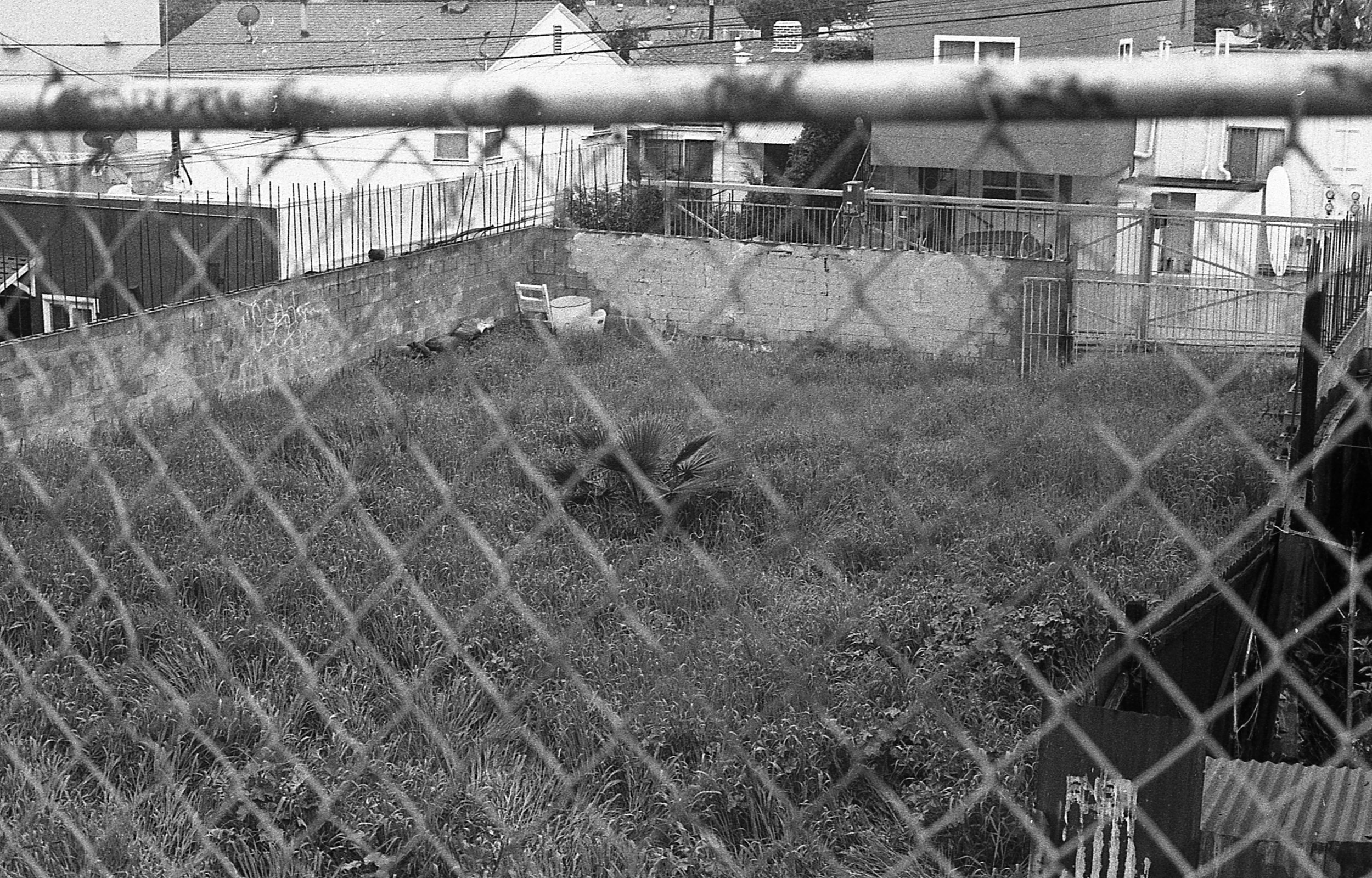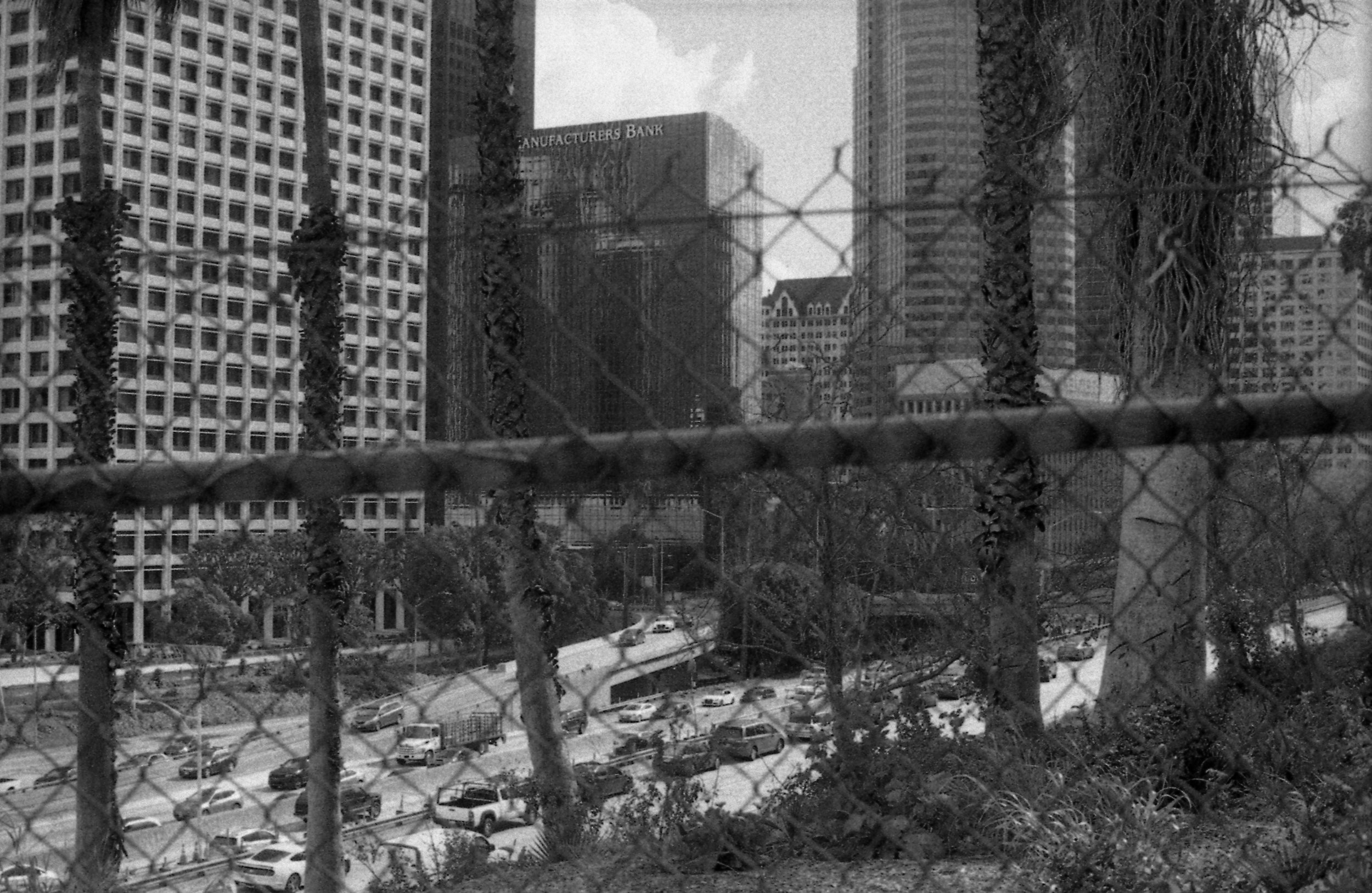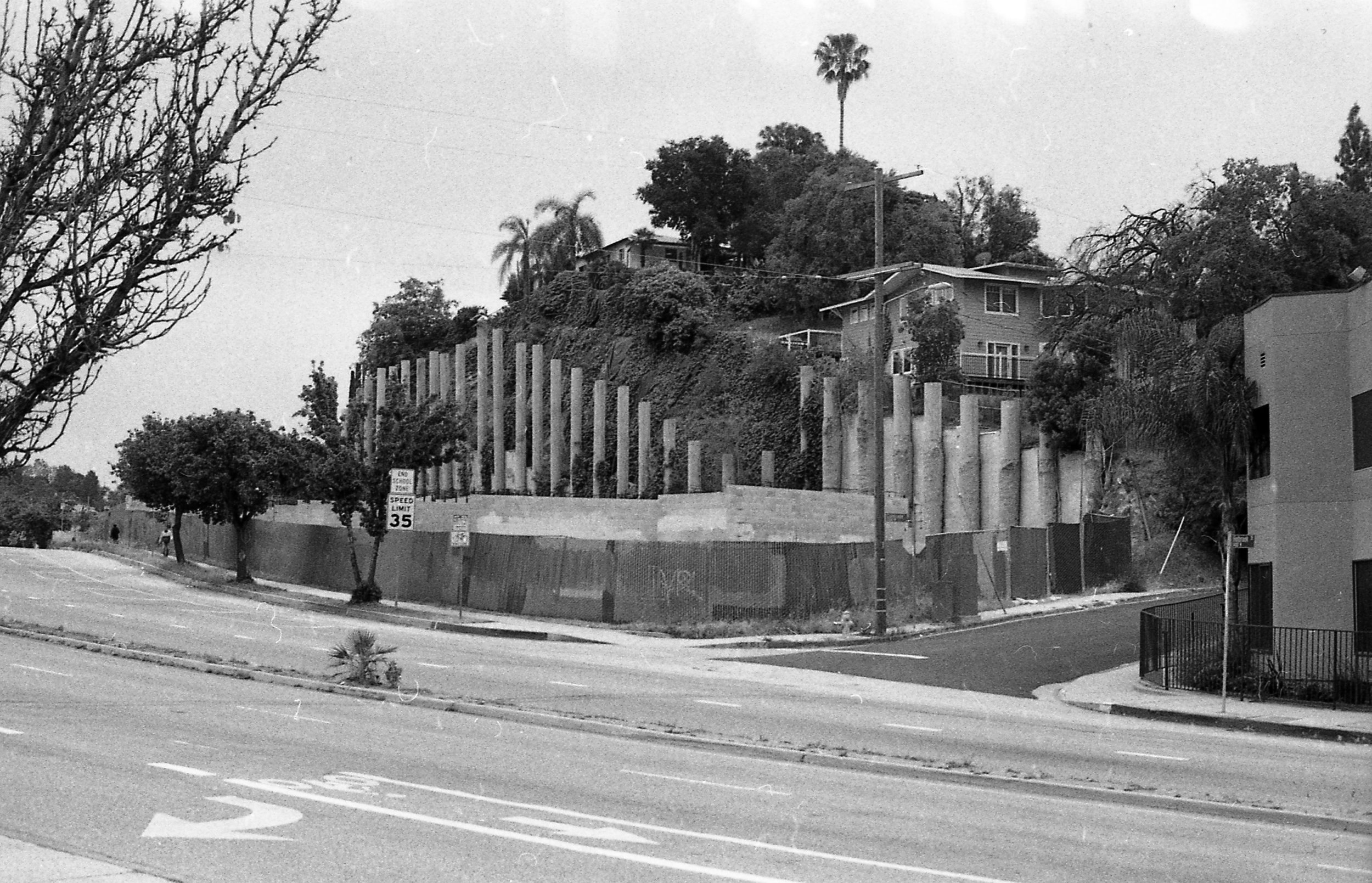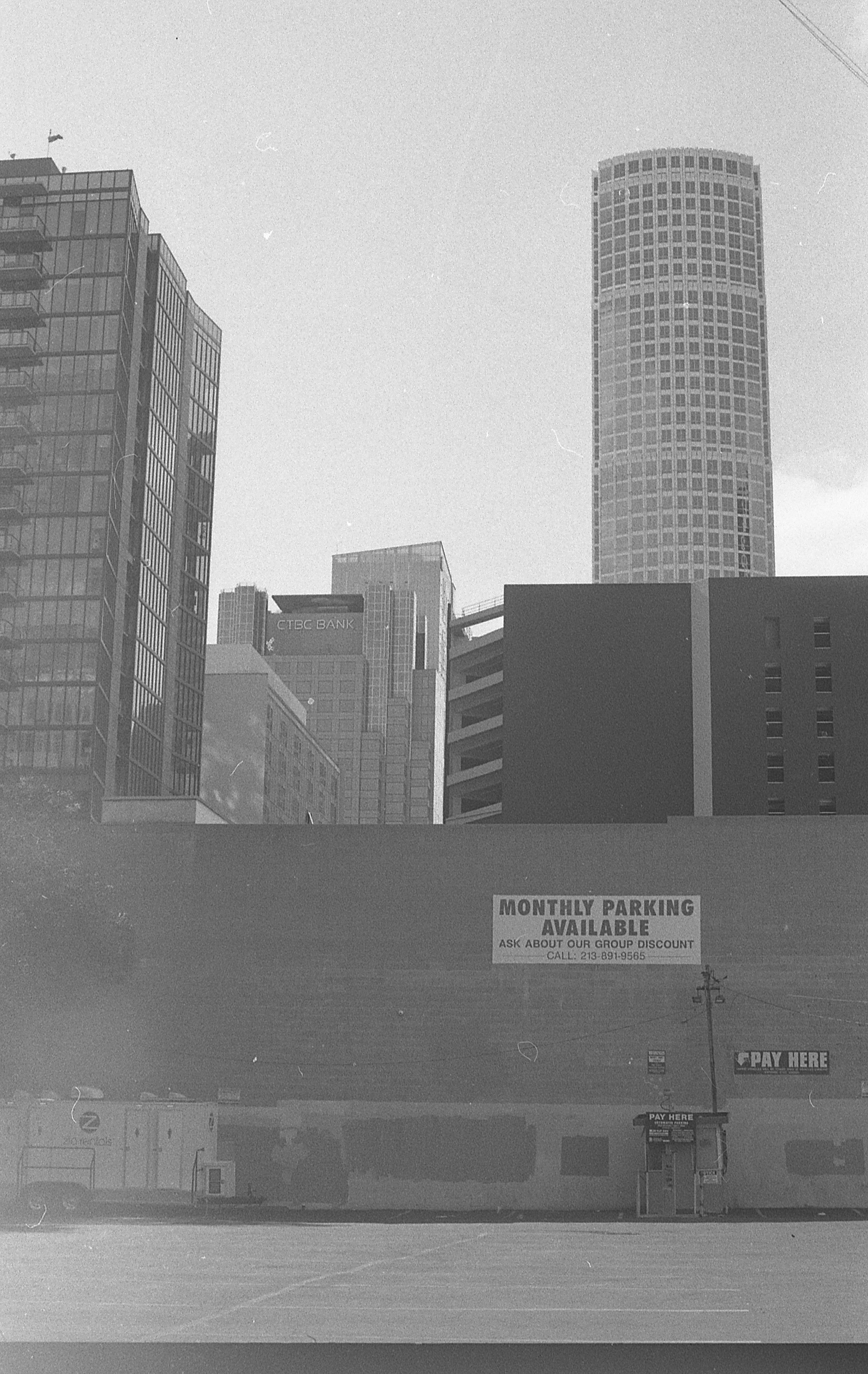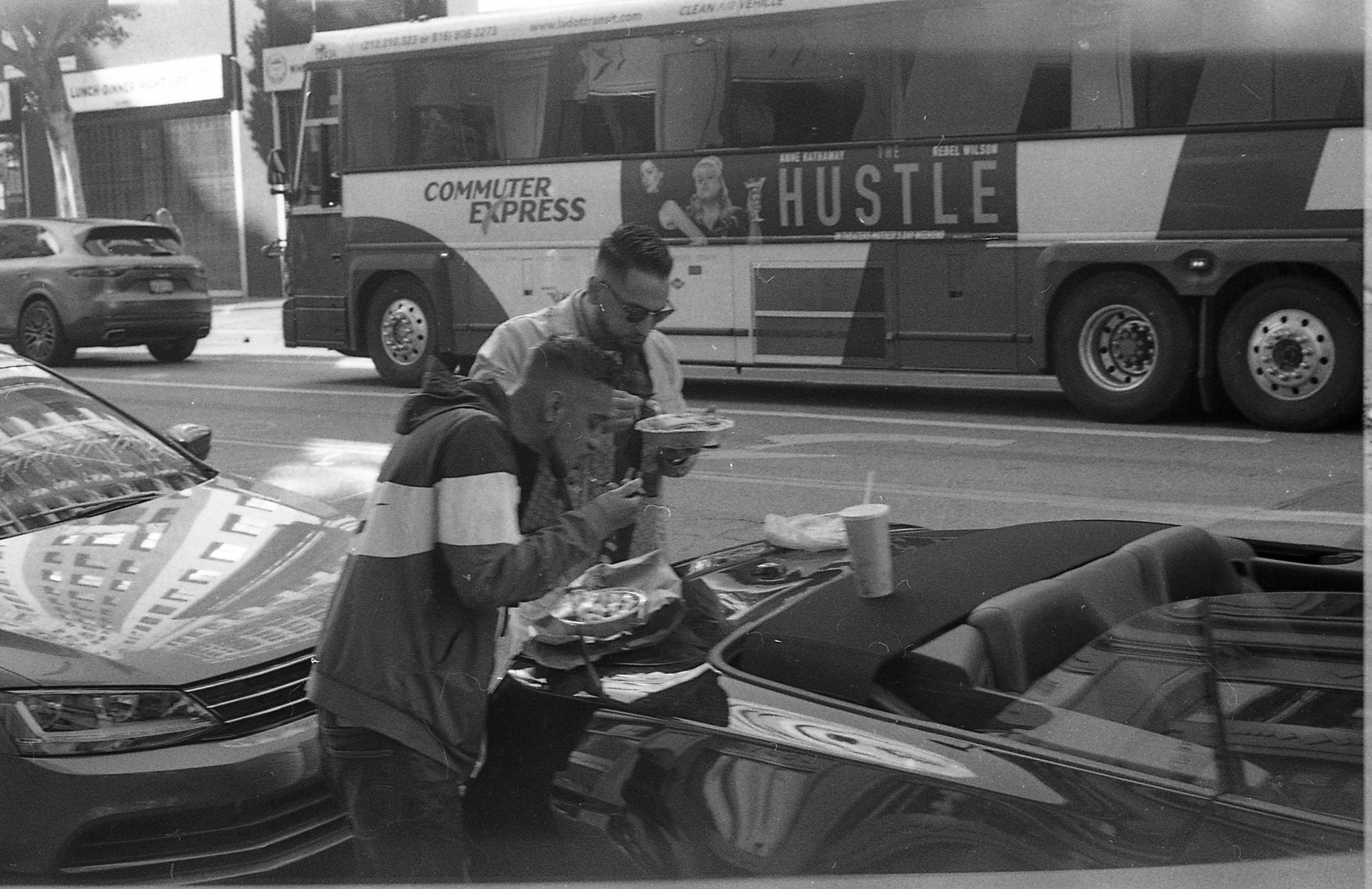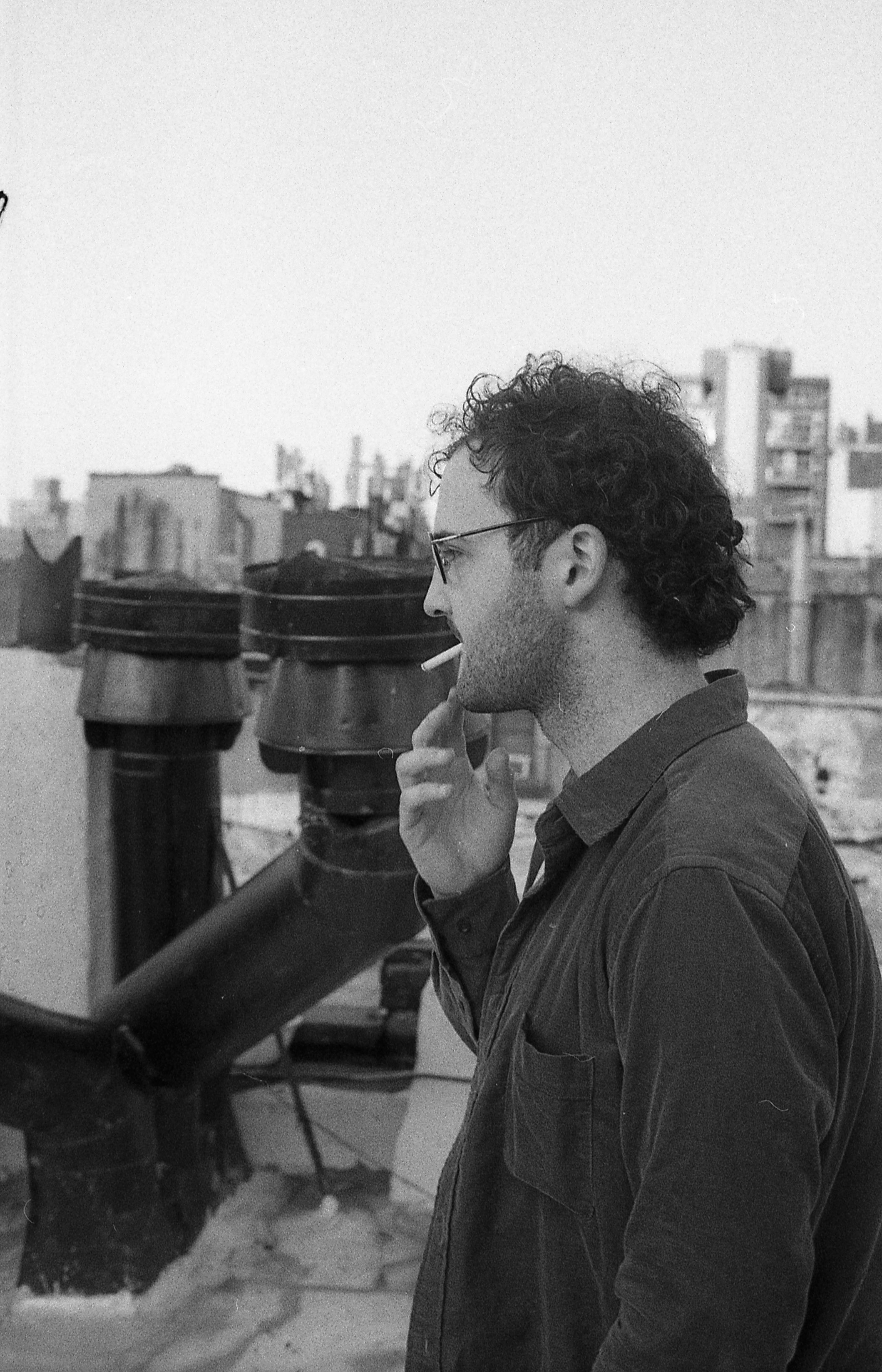ORWO N74+
Is a black and white german cinema film manufactured by Filmotec under the ORWO brand. It’s available in Europe direct from filmotec in lengths of 100ft or more, exclusively in 16mm and 35mm, and in the US from ORWO NA provided they either have stock directly on their website -- if they don’t have any stock listed, they’re super friendly, and I’d still recommend reaching out to them to double check. You can buy the film from some other sources/places but there’s definitely a markup -- I can confirm that Lomo Berlin Kino is N74+ -- the edge coding is the same, and even includes “n74” with the only difference being the addition of individual frame coding. Apparently, it also used to be Bergger’s house brand (BRF+) of 400 speed film and Bergger’s dual layer approach/style comes from Orwo N74+/BRF’s.
I’ve had my eye on N74 for quite some time, I always thought the concept of it was fascinating, and from what I’ve seen the tonality of it was pretty great.
Here are some of the reviews that got me interested in the film (click through):
Colin Barey for Japan Camera Hunter’s Review
Wide Angle Living (honestly this was the hard sell set of photos that really made me want to shoot N74+)
Prone to distraction I wandered off and found myself having trouble committing to ordering the film (this was before I started bulk rolling). After the announcement of Lomo Berlin Kino, (the supply all over Ebay had dried up or jumped in price), I scrambled to find some at an affordable price, and made a priority of finding it and shooting it, in my quest for a true daily shooter.
I doubled down and ordered two 100ft Reels of 35mm. I regret nothing.
My Basic Test Benchmarks are:
The film was shot at 200, 400, 800, and 1600, and pushed to 800, 1600, or 3200. There’s a chance some of the film got divebombed to like 5000, but I think that’s unlikely considering the developer, etc.
I only used the film in the Minolta XD-11, and the only lens I shot was the venerable MC PG Rokkor 50mm 1.4.
One of the rolls was exposed to some slight radiation via the WTC’s X-ray machine. I can’t really tell a difference in it though.
33/35 rolls were developed in Xtol 1:1, at a variety of ratings and techniques.
2 Rolls were shot in Rodinal, of those, one was shot @250, and developed to 500, and the other was shot at 400, and stand developed in rodinal 1:80 (with two rolls of tri-x, the 1:80 is to avoid complications with a minimum amount of Rodinal)
(Rodinal 1:50 shot @250, Developed to 500 pictured to the left.)
So given all that, what did I actually learn shooting 35 odd rolls of Orwo N74+?
If you’re going to pick a daily shooter that isn’t digital, make sure you can find it reliably. I know this is a somewhat lost concept on a lot of film shooters -- a lot of people like variety in their film diet, and I’d even argue for some people, using a heavily variated slew of different films is part of their process. But if you’re going to make the commitment to having one consistent look for your photography (and I’m sure this seems really obvious typed out like this) you really need to be able to easily access the film and developer you’re shooting. The availability of Orwo at affordable prices is spotty (in the USA), so while I liked the results, it’s a bit difficult to honestly recommend or think about. Take for example my trip to New York, where I burnt out of my film in maybe a day and a half, and ended up having to run out and buy a couple of bricks of Tri-X to replace it.
Obscurity isn’t superiority. So, there’s a strong chance that you’ve never heard of N74+ before this review, and it’s not due to ignorance, or lack of being generally informed -- this film is pretty obscure -- sure there are a handful of reviews of reviews out there on the film, and you can definitely find some published data on the film from Filmotec, and the Massive Dev Chart, but it’s by no means an easy film to find or acquire. N74+ is definitely a high quality film, but after having tested it fairly extensively, I can honestly say I don’t think it’s any better or more useful than say HP5+, Tri-X, or even it’s bastard-son still successor (and personal favorite) Bergger Pancro 400, nor is it really cheaper than any of those films, especially when one factors in the cost of bulk rolling supplies for standard 100ft rolls, or even the difficulty of potentially chopping down/up a 400ft roll or 1000ft roll of the stuff.
TL;DR -- ORWO N74+ is a great film, but it’s not necessarily so unique or so much better than any of the other mainline 400 speed films, despite it’s obscurity.
Cine film and still film are two different animals. So, point of order, I actually had a cinematographer tell me this, verbatim, maybe seven years ago. Unfortunately that comment didn’t stick. Anyway, the two films actually respond differently because, go figure, they’re typically used for different purposes. Per David Hancock’s video on Kodak 5222 (double-x) they lack reciprocity failure info (not that I’ve ever particularly cared about long exposures, or using a tripod.) Also, minor detail, but somewhat relevant: the perforations between the two film types are different. The only real other relevant commentrary I can give is that the film is maybe a little more touchy when it comes to playing dumb games with processing and exposure.
The Johnny Patience Methodology isn’t foolproof, and doesn’t work with every film. I’m a big fan of the Johnny Patience Zone System is dead methodology -- I’ve probably linked to it too many times here, or I should write my own article on it or my findings -- not that I really have enough data (for my own standards) to really refute, argue, or agree with him. The method is really strong, and I think it bears repeating or using. Johnny promotes using it across all films, and while I think it’s probably legitimate for still film, I ended up running into problems left and right with it for the Orwo N74 while shooting in daylight, either because the scenes I was shooting were way too bright, or perhaps too contrasty to begin with. So, another nod to the aforementioned David Hancock video on 5222, is that he found that the exposure window of the film was pretty narrow -- or that if you developed the film at a certain shot ISO it had to be developed at it, because the film was essentially meant to do reversals or be reversed, and that seems to be the case with N74 as well. Most of the film I shot at 200, then pushed to 800 was almost too thick to scan, and likewise on the day shots I shot at 800 and pushed to 3200, I suffered a similar problem. However I definitely got usable results pushing from 250 to 500, and from 800 to 1600.
Really refining a shooting/developing system is hard. Like harder than I’d initially anticipated, especially if you already have a system in place that works. So to reiterate, I’ve gotten pretty firmly adapted to shooting 1 stop over my target and then pushing 1 stop over the target to get the best possible tonality out of my film. For most dedicated still film, the system works really well, especially with bulletproof/indestructible films like HP5+ -- but unbeknownst to me, it can actually fail. Now instead of trying to re-think my methodology, because this film behaved completely differently than anything I’ve I tried, I kept using my normal method and system, to middling at best success, and only tried to retrofit the film to my existing system rather than realizing it was different. Making those adjustments is even harder when you’ve got a fairly slim technical document to work off of, a limited understanding of the numbers and figures in that document, and on top of that there’s a very small set of published data available, from the manufacturer, or otherwise on the massive dev chart.
Be careful using or re-using bulk-load canisters, and bulk loaders. So, up to now, I’ve had pretty good, or even excellent luck with my bulk loader, and my reloadable cartridges. I used to own a bobinquick/AP/Kaiser design (would highly recommend), but it broke, so I decided to try out a lloyd loader. The lloyd loader worked for a while (it’s what I used for my APX 100 reviews) but by the time I’d gotten to chopping up the film for Forte 400, the loader had some kind of odd leak, or alternately, my used 35mm plastic loading spools had gone bad and started giving me intermittent light leaks in odd places from light piping.
Rodinal can actually be okay or acceptable with 400 speed film, but you really have to mind the dilution and temperature. I actually really like the roll of ORWO I ran in Rodinal 1:50, I prefer the look of the XTOL 1:1 rolls (or like I prefer the Xtol once I realized if you shoot at 800, you can only really push to 1600 or 800, or if you shoot at 400, you can only really develop to 400, in this case), but overall, I think the rodinal roll at 1:50 was actually a decent or acceptable look.
Night photography without a tripod is cool. I think tripods take away a sense of urgency, especially during night photography, so getting out at night and into night-shooting handheld shenanigans was really fun, and actually pretty informative to how exposure works, or I guess how bright highlights can be, even when you think they’re barely going to read at all.
Lomography can be kind of a rip-off with good packaging. I know I’m peripherally in/around the film community, and this is a bit of a hot-take. But after confirming by hand that N74+ and Lomo Kino Berlin are the same film, but at over twice the price (in 35mm), it puts a bad taste in my mouth. I will give them huge props on assembling the huge amount example photos for the film -- check it out here (if you look carefully you can even see “N74+” on the edge coding in one photo on the page). That said, I just found out they’re going to be making Berlin Kino in 120, along with the existing Potsdam Kino, and quite frankly 10 dollars is expensive for b&w 120 film, but, armed with the understanding that there’s no real easy way to respool master rolls into 120 film, or cut 70mm film into 120 film without dedicated equipment, I think the price (for both emulsions in 120) is justified.
XTOL TESTS (all 1:1)
Shot @200 (Day) Developed to 800
Almost too thick to scan, but once you’re through that, the tonality isn’t too bad, provided it’s not a complete blowout.
Shot @ 400/800 (Day) Developed to 800
Can blow out, but less blowout/not too thick typically.
Shot @800 (Day) Developed to 3200
Almost too thick to scan, the contrast is crazy but in kind of a neat way. A bit of a double edged sword.
Shot @800 (Day/Night) Developed to 1600.
For my uses, this is probably optimal. How I’d shoot/use N74+ From now on.
Shot @800 (Night) Developed to 3200
The two stop push here might be a little overkill, but it seems to work out okay, would recommend, if you’re only doing night photography.
So, what’s the word on the film:
I’d recommend it but with some pretty hefty reservations. ORWO has fairly unreliable availability in the USA, even if the company is friendly enough, that and the other options are to buy the film at a not insignificant markup from LOMO, FPP, or even Silberra (not hating on Silberra, they seem to be doing god’s work as far as developing or reviving new black and white emulsions goes, I’d just rather order one of their own original emulsions, rather than a respool from another company). I like the results I got from ORWO, it’s neat stuff, and I’d argue of a very high quality, and assuming you do properly expose and develop it, it has a really nice look, and 35 rolls later, after having had to re-configure my system for it, I’d still consider buying and using it. That said -- it’s a bit finicky, and the ease of blowing it out makes it kind of hard to recommend here in LA where it’s bright sun all the time -- but if you’re in a climate with darker and softer lighting, like say New York, or Maine, or Germany, and either don’t binge shoot 30 rolls in two months, don’t mind the hassle of chopping down a 400 or 1000ft roll of film (you can get some real huge savings here), or don’t mind taking a price hit, it might be worth your while to check out.
Likewise, this film made me want to go back and shoot more Bergger Pancro 400, but like N74+, Pancro is pretty hit or miss on availability, as of writing this, none of the major outlets seem to be holding any stock of Pancro in 35mm. So far the compromise (not really a compromise) to swap over to Tri-X, has actually been really good.
I definitely will try the film in 120 format when available from Lomography (don’t worry I’ll check the edge coding of the 120 to see if there’s any hints or tips of the hand -- there may not be). That’s of genuine interest to me, even if it is mostly a curiosity to me at this point.
Anyway, if you’ve enjoyed this article, go ahead and pick something up in the shop.

